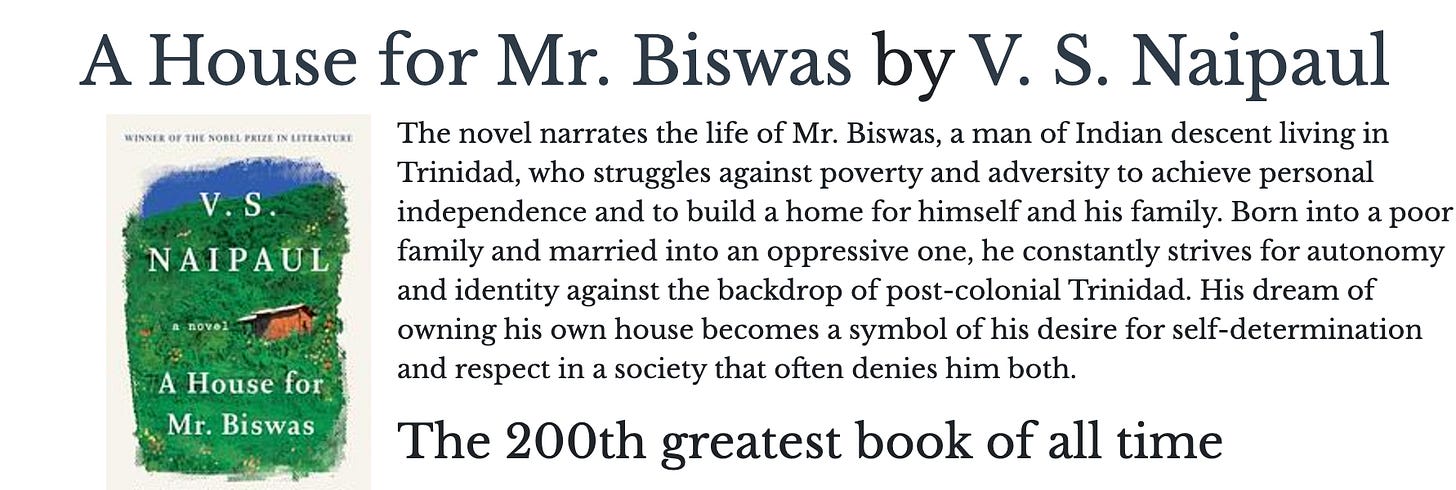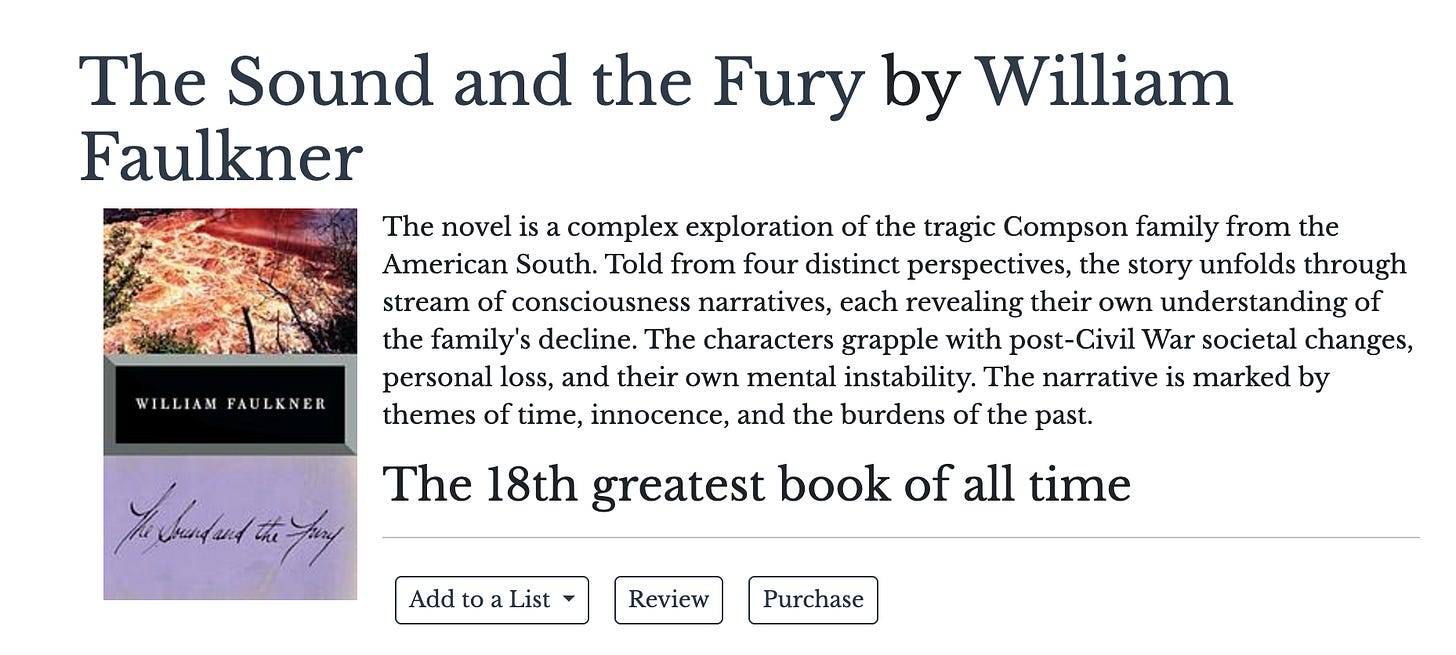19 classic literature books for my 2025 reading plan
Another year has flown by, and the four seasons have passed in a blur. Here’s a summary of my reading journey this year.
Some people say they can read 50 or even 79 books in a year—those numbers are beyond my reach. Back in 2022, when I had more free time, I only managed to read 40 books, and they were mostly lightweight Chinese books. Now that I’m working, I can spare just 1–2 hours a day for reading, which means I can barely finish 20 books in a year. This year, I read fewer than 20 books in total.
In May, I switched to a new computer and deleted all 50+ e-books I had read previously. I vividly remember wanting to revisit a highlighted passage from Diana Vreeland’s biography, only to realize all my notes were gone. Feeling both loss and betrayal, I decided to start fresh and, in one go, deleted all 50+ English e-books in my storage folder. I even emptied the trash bin immediately. That experience taught me a lesson: only download essential PDFs. They’re universally compatible and keep annotations intact regardless of platform changes. I also uninstalled Apple’s Books app—it’s unreliable, and switching computers confirmed that for me. "Bad habits won’t fly with me!"
Because of this chaotic reset, I’m not listing my reading list for this year. Over the past two years, my reading has been all over the place—business, filmmaking guides, biographies, literature, essays, cloud classifications, anecdotes of fashion designers—just a big mix. I’ve always preferred clean, organized structures, and the randomness and inconsistent quality of my reading frustrated me so much that I even deleted notes on books I read in the past six months. I only kept [The Rings of Saturn](The Rings of Saturn) and Werner Herzog;, as they were the best books I read this year and I even wrote detailed notes on them.
In 2022, despite reading 40 books, only Wuthering Heights left a lasting impression. I find Emily Brontë more talented than her sister Charlotte Brontë. Jane Eyre never managed to capture my interest.
This shows the importance of reading fewer but better books.
Having experienced the value of reading good books, I’m taking a more deliberate approach to my 2025 reading list. Since I’ve started experimenting with short- and long-form fiction writing, all 20 books for 2025 will be English literature titles downloaded from thegreatestbooks.org. For someone like me who only reads English books, this website is a treasure trove, far better curated than Douban. The range and depth of its collection are astonishing. "A new world has opened up for me."
The second book on the list, Ulysses by James Joyce, is by my current favorite author. Last year, I read his Dubliners, which inspired me to write a series of short stories about interesting people I’ve observed in Beijing. A Knocker Who Inspects Radiators was the first piece born from this inspiration.
I’ve downloaded Ulysses, but I’m not sure if I’ll manage to finish it next year. It’s the first classic I’ve encountered that requires a dedicated companion guide to understand, making it even harder to read than the works of Russian literary giants. James Joyce holds a place in Ireland akin to Shakespeare in England, and his personality is delightful. If I may say so, Eddy’s personality shares some similarities with his.
The third book, Proust’s In Search of Lost Time, is another monumental work. Together with The Brothers Karamazov, these three books could occupy me for half a year. I’m unsure if I’ll read them in this order, but I’ve started to get into Dostoevsky’s style. He’s rightfully called a “pneumatologist” —a brilliant investigator of the human spirit—able to articulate emotional and spiritual nuances with precision. He himself could be likened to Zosima. His skill in character portrayal makes his works easier to read compared to the more stream-of-consciousness-heavy Ulysses. I’m not sure how it compares to a Wittgenstein biography, though—last year, I abandoned Wittgenstein after one-third of the book.
Below are the books I’ve downloaded in preparation for next year. I won’t list the three major classics mentioned above since they’re already so well-known.
A Farewell to Arms
When I first encountered The Old Man and the Sea in elementary school through an excerpt, I couldn’t understand why it was considered a classic. The story seemed unimpressive, and the language felt sparse and unremarkable. Now that I can read English, I’ve come to realize Hemingway’s defining characteristic—at least for me—is his choice of words. Perhaps due to his experience as a war correspondent, his language is devoid of ornamentation, simple yet precise and powerful. Hemingway’s style stands in stark contrast to Fitzgerald’s, as they are polar opposites in their use of language.
For example, the phrase “as though the winter season itself was disconnected from my senses” could be distilled in Hemingway’s style as “as if winter had lost its sting.” Sharp and concise.
If you’re unsure how to write, word by word imitation of Hemingway can be an effective starting point.
The story of A Farewell to Arms takes place during World War I, focusing on the love affair between American volunteer nurse Catherine Barkley and American ambulance officer Frederic Henry. Set against the brutal realities of the Italian front, their romance blossoms as Frederic recovers from his injuries, becoming a short-lived but precious sanctuary amid the chaos of war.
However, the cruelty of war inevitably intrudes upon their lives. As the story unfolds, Frederic confronts the horrors of battle, personal losses, and existential questions. Their love is both a defiance of fate and a poignant depiction of human isolation and vulnerability in adversity.
The Complete Stories
A collection of 85 short stories by Clarice Lispector, a Ukrainian-Jewish Brazilian author, spanning her entire career—from her debut at age 20 to her later, more mature works. This compilation captures the essence of this Latin American literary master’s unique style.
These stories, translated from Portuguese, reveal Lispector’s deeply introspective, intimate, and emotional approach, complemented by striking metaphors and fluid prose. She is not an easy author to read, as her works lack traditional plots and instead delve into women’s inner thoughts and self-reflection. Known for her stream-of-consciousness style, Lispector’s stories can feel opaque at times.
Her most renowned work is the novella The Passion According to G.H., while her debut, Near to the Wild Heart, established her reputation. I downloaded this collection to explore her style and to learn how to craft effective short stories.
Down and Out in Paris and London
George Orwell is best known for 1984 and Animal Farm, ranked #7 and #59 respectively, but Down and Out in Paris and London comes in at #1234.
I chose this lesser-known semi-autobiographical work because I’m less interested in Orwell’s politically charged classics that delve into authoritarianism, economics, and sociology. Instead, I prefer simpler, everyday life narratives imbued with philosophical wisdom. Compared to works that critique society at large, I care more about individual introspection, even in stream-of-consciousness form.
While I keep a certain distance from authors like Orwell and Joseph Conrad, who expose societal and human flaws, I hope to finish this book and gain insights from its portrayal of ordinary struggles.
Drive Your Plow Over the Bones of the Dead
Olga Tokarczuk is one of the most acclaimed and bestselling Polish authors of contemporary literature, renowned for her Nobel Prize-winning works that blend mythology, folklore, and modern Polish life. She studied psychology at the University of Warsaw.
This novel, ranked #1332, combines literary finesse, philosophical depth, and a touch of mystery. It’s narrated from the perspective of Janina Duszejko, an eccentric elderly recluse living in a remote Polish village. A vegetarian, astrologer, and staunch advocate for ecological and animal rights, Janina becomes entwined in a series of mysterious deaths during a harsh winter, all seemingly connected to the hunting of animals. Published in 2009, this novel is regarded as a masterpiece of modern European literature.
Gargantua and Pantagruel
A masterpiece of French Renaissance literature by François Rabelais, Gargantua and Pantagruel was originally published between 1532 and 1564.
The novel chronicles the adventures of two generations of giants—Gargantua and his son Pantagruel. From Gargantua’s birth and education to Pantagruel’s growth and explorations, the story is filled with absurd events and exaggerated humor. Rabelais skillfully weaves allegory, political satire, and philosophical musings into this epic tale, using the giants to critique societal, religious, and academic corruption of the time while celebrating knowledge, freedom, and human wisdom.
A House for Mr. Biswas
V.S. Naipaul, first published in 1961, combines humor and tragedy to portray the struggle of a small man while reflecting the complex realities of colonial society.
The novel centers on the life of Mohun Biswas, chronicling his journey from birth to death as he struggles to achieve independence and dignity. Born into a poor Indian family in Trinidad, his childhood is marked by misfortune as he is considered "inauspicious" and faced with numerous hardships. His marriage into the dominating Tulsi family brings further restrictions. Despite turmoil and setbacks, Biswas remains determined to fulfill his dream of owning a house, a pursuit that symbolizes not just material aspiration but his quest for identity, independence, and self-worth.
Middlemarch
George Eliot's Middlemarch, serialized between 1871 and 1872, is a masterpiece of realism that delves into profound social observations, rich character development, and intellectual depth.
Set in the fictional rural town of Middlemarch in 1830s England, the novel weaves multiple storylines, with key figures such as Dorothea Brooke, an idealistic young woman whose aspirations to improve society are thwarted by her marriage to the cold and detached scholar Edward Casaubon. Another central figure, Tertius Lydgate, an ambitious doctor, faces compromise due to financial and marital struggles. Supporting characters like Nicholas Bulstrode, a shrewd businessman, and Rev. Farebrother, a kind-hearted clergyman, navigate moral dilemmas in a changing society. Themes of love, marriage, political reform, science, and class are explored in depth. Eliot masterfully captures emotional complexity and moral conflicts while vividly portraying societal transformations in 19th-century England.
Never Let Me Go
Kazuo Ishiguro, a Japanese-British author, gained further prominence with this novel set in a world that appears ordinary but hides a chilling secret. The story follows three characters—Kathy, Tommy, and Ruth—who grow up in a boarding school named Hailsham. They receive a unique education focused on art and health but are isolated from broader society. Gradually, it is revealed that they are clones bred for organ donation, their lives predetermined.
This poignant tale explores themes of identity, love, memory, and humanity, offering a compelling reflection on ethical dilemmas. Ishiguro's evocative prose and nuanced storytelling make it a deeply moving read.
Lolita
From Lolita, I came to know Jeremy Irons. I used to think I liked American men, but now I’ve realized that the gentle, refined charm of British men is simply irresistible.
I plan to read the original Lolita sometime soon—it’s ranked as the 6th greatest novel!
Initially, I considered reading Pale Fire, thinking it was also a love story, but here’s what I found:
Pale Fire appears, on the surface, to be a publication of the late poet John Shade’s long poem, Pale Fire, with annotations and a foreword by his neighbor, colleague, and “editor,” Charles Kinbote. The poem is composed of 999 lines in heroic couplets, exploring themes such as life, death, art, and Shade’s grief over losing his daughter. Shade’s poetry is elegant and directly engages with life’s ultimate questions.
However, Kinbote’s annotations and foreword gradually take over the narrative. Not only does he offer subjective interpretations of Shade’s poem, but he also weaves in elaborate stories about his own life—including claims that he is the exiled king of a distant land called Zembla. As the commentary unfolds, Kinbote’s arrogance, paranoia, and unreliability become apparent. His narrative contrasts sharply with Shade’s poetic themes, blurring the boundaries between reality and fiction, poetry and critique.
I decisively deleted Pale Fire from my list, leaving only Lolita~.
Vladimir Nabokov, it turns out, was actually a biologist who loved studying butterflies. Between 1949 and 1959, he and his wife drove 150,000 miles across North America, capturing butterflies. "Every summer, my wife and I would go butterfly hunting. The specimens we collected were donated to research institutions," he said. "During evenings or cloudy days at these camps, I worked with great energy on Lolita."
The Magic Mountain
Thomas Mann won the Nobel Prize in Literature in 1929, representing critical realism and psychological literary analysis.
The story takes place in a tuberculosis sanatorium in the Swiss Alps at the beginning of the 20th century. The protagonist, Hans Castorp, is a young engineer who originally planned a short visit to his cousin Friedrich but unexpectedly stays at the sanatorium for seven years, becoming a long-term patient. The novel deeply explores complex themes such as illness, time, death, human nature, and European civilization.
The Sound and the Fury
William Faulkner, a representative of stream of consciousness literature in the United States and Nobel Prize in Literature winner in 1949.
The Sound and the Fury depicts the tragic fate of the Compson family in the American South from four narrative perspectives. The novel explores race, class, family decline, and social changes in the South through a non-linear, stream of consciousness narrative style.
The Turn of the Screw
Henry James, an American-British novelist who lived in Europe for a long time and often wrote about interactions between Americans and Europeans.
The Turn of the Screw is a classic Gothic psychological horror novel that tells the eerie experiences of a young governess caring for two orphans in a remote country estate. The novel is known for its ambiguous narrative style, making it difficult for readers to determine whether the ghosts are real or hallucinations of the governess's mental breakdown.
The Portrait of a Lady, published in 1881, is a complex psychological novel exploring female autonomy and personal choice. The story revolves around Isabel Archer, an intelligent and independent young American woman who rejects traditional marriage patterns. After inheriting a large sum of money, she decides to explore life freely. However, she ultimately marries the cunning Gilbert Osmond, sacrificing her personal freedom and independence. The novel delves into the complex tensions between women's social status, marriage systems, personal freedom, and social expectations in late 19th-century American and European societies, revealing the difficulties and costs of personal choice through intricate psychological portrayal and complex interpersonal relationships.
When Breath Becomes Air
When Breath Becomes Air is a memoir written by Paul Kalanithi during the late stages of his cancer, documenting his life transition from neurosurgeon to patient. The book explores life, death, professional ideals, and personal meaning, chronicling the author's reflections on life while facing a terminal illness and his thoughts on the medical profession. Kalanithi records his journey from doctor to patient with sincere and profound writing, demonstrating the pursuit of meaning in life's final stage.
Woman in Love
Having watched the movie Lady Chatterley's Lover and recently finished Sons and Lovers (which I found generally unremarkable), I plan to read D.H. Lawrence's Woman in Love next year, again set against the backdrop of the Industrial Revolution.
Women in Love focuses on the complex relationships of two couples (Ursula and Gudrun, Gudrun and Rupert) in the late British Industrial Revolution. The novel deeply explores the psychology of interpersonal relationships, emotion, and personal freedom, critiquing modern industrial society. Through unconventional narrative styles and poetic language, it challenges the social moral concepts of the time. Due to its explicit content and subversion of traditional values, the work sparked literary and moral controversies upon publication but is now recognized as one of Lawrence's most important works, profoundly reflecting social changes and human complexity in the early 20th century.
Postscript
If I can finish 10 out of these 19 books, I'll consider my goal achieved. I don't plan to read In Search of Times, which is over 3,000 pages. Ulysses might be a challenge. Priority will be given to A Farewell to Arms, Lolita, Woman in Love, The Remains of the Day, Never Let Me Go, The Complete Stories, Middlemarch, and A House for Mr. Biswas.
This website is a treasure I discovered this year, allowing me to read based on rankings instead of wasting time. I hope my spiritual world will be more abundant next year and that my writing will improve.
The PDF version of these books are on my Google Drive
Chinese Version AI Articles on WeChat : pamperherself























